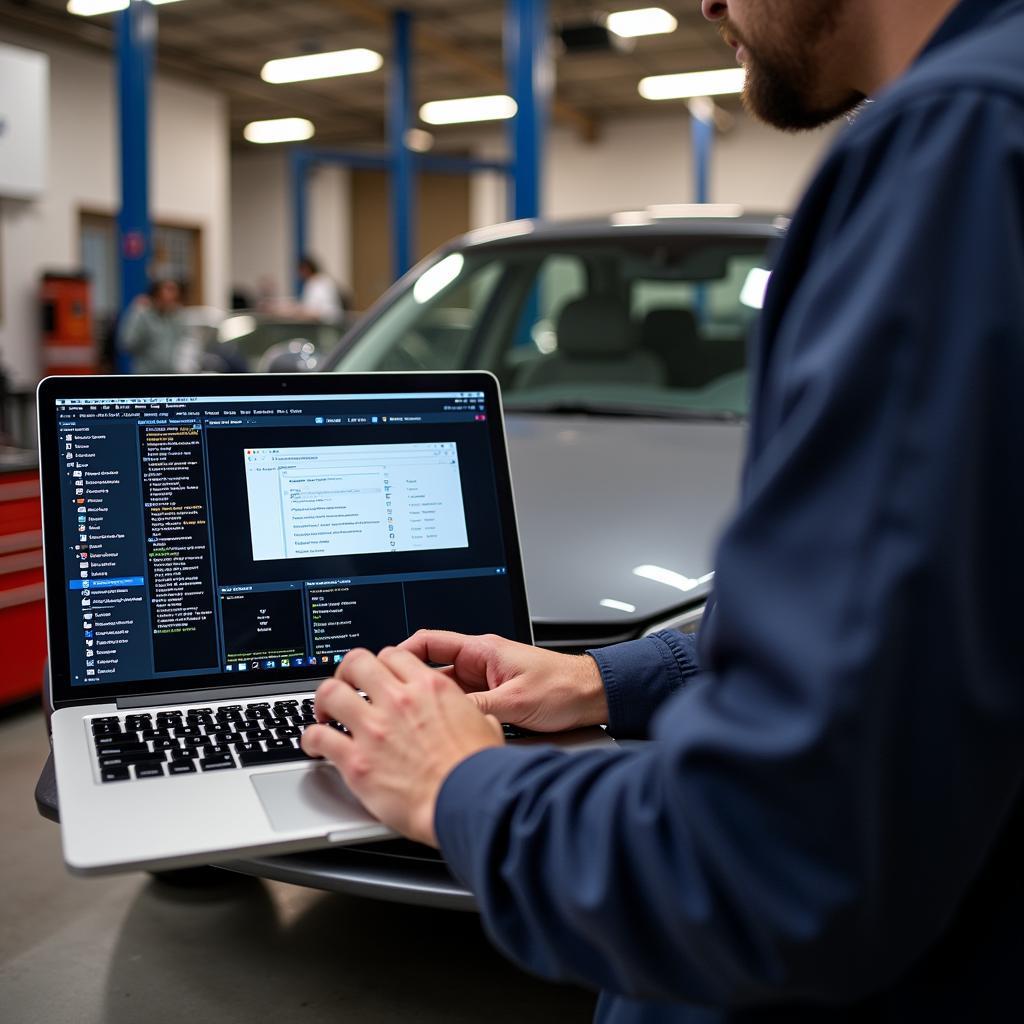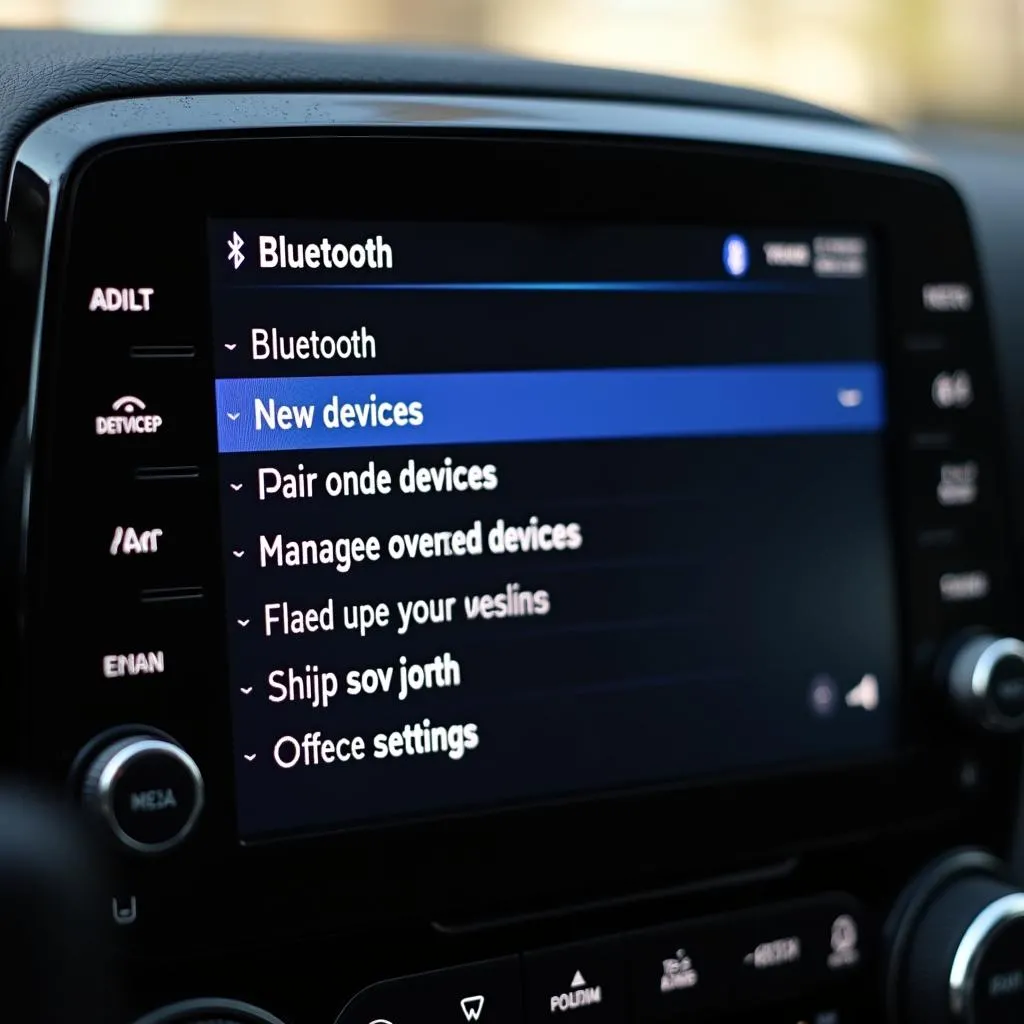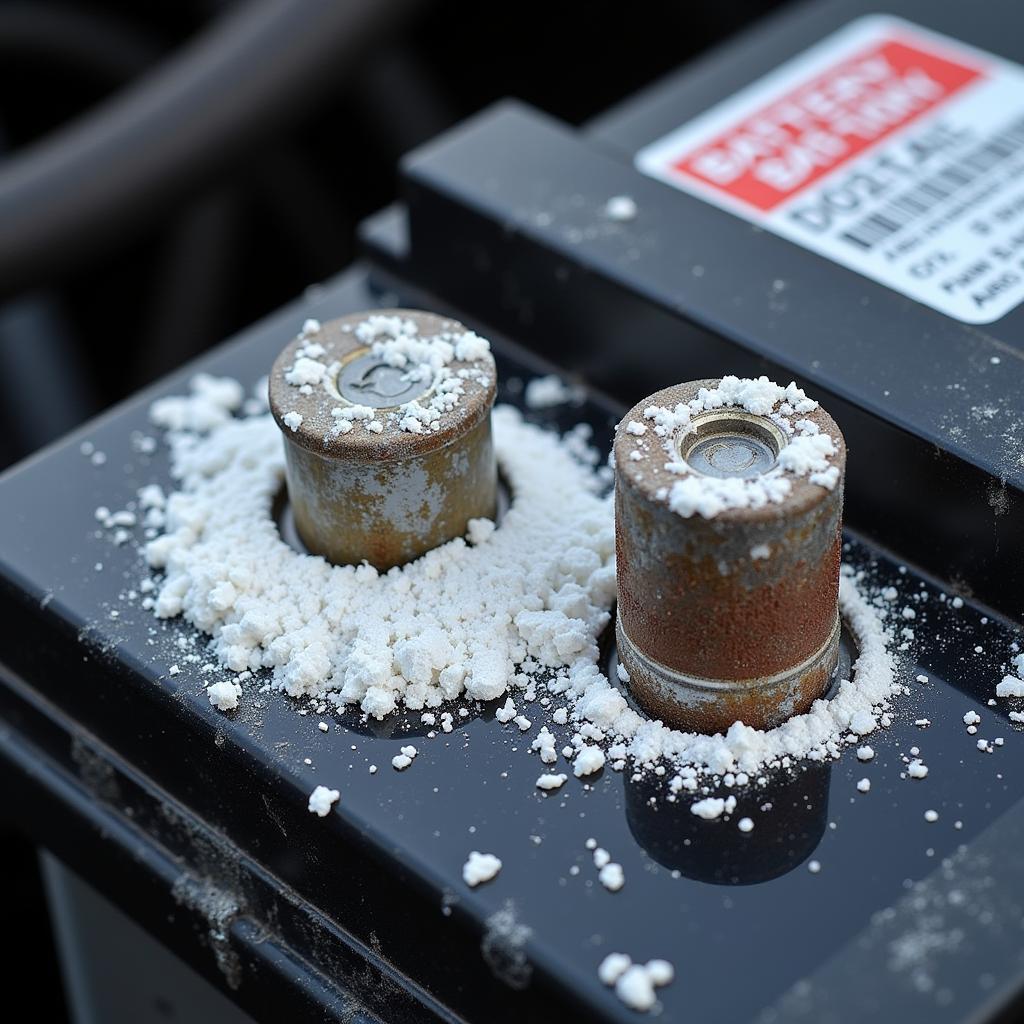The brake warning light on your 1999 Toyota Avalon is a crucial safety feature that shouldn’t be ignored. When illuminated, it signals a potential issue with your braking system that requires immediate attention. Understanding the common causes of this warning light can help you troubleshoot the problem and ensure your safety on the road.
This comprehensive guide will explore the various reasons behind a lit brake warning light on a 1999 Toyota Avalon and provide potential solutions to get you back on track safely.
Why is My 1999 Toyota Avalon Brake Light On?
Several factors can trigger the brake warning light on your 1999 Toyota Avalon. Here are some of the most common culprits:
Low Brake Fluid Level
One of the primary reasons for the brake warning light to illuminate is a low brake fluid level. Brake fluid is essential for transferring force from your brake pedal to the wheels, enabling your car to stop.
How to Check Brake Fluid:
- Locate the brake fluid reservoir under the hood. It’s a translucent plastic container labeled “Brake Fluid.”
- Check the fluid level against the “Min” and “Max” markings on the reservoir.
- If the fluid is below the “Min” mark, it indicates a leak or worn brake pads that require immediate attention.
What to Do:
- Add brake fluid: If the fluid level is low but appears clean, carefully add the recommended brake fluid until it reaches the “Max” line.
- Inspect for leaks: Thoroughly check for any signs of leaks around the brake lines, calipers, and wheel cylinders. If you detect a leak, it’s crucial to have it addressed by a qualified mechanic immediately.
Worn Brake Pads
Brake pads are designed to wear down over time with regular use. As they wear down, the brake fluid level in the reservoir naturally decreases. If the brake pads wear down excessively, it can trigger the brake warning light.
How to Check Brake Pads:
- Look through the spaces between the wheel spokes to visually inspect the brake pads.
- You should be able to see the brake pad’s friction material. If the friction material is less than ¼ inch thick or you notice metal-on-metal contact, it’s time for a replacement.
What to Do:
- Replace brake pads: Worn brake pads compromise your braking ability and safety. It’s best to have them replaced by a professional mechanic.
Faulty Brake Light Switch
The brake light switch is responsible for activating your brake lights when you press the brake pedal. A malfunctioning brake light switch can also trigger the brake warning light.
How to Check the Brake Light Switch:
- Have someone observe the brake lights while you press the brake pedal.
- If the brake lights don’t illuminate, the switch might be faulty and needs replacement.
What to Do:
- Replace brake light switch: Replacing this switch typically involves removing the plastic panel under the steering column and accessing the switch mounted above the brake pedal.
ABS Issue
The Anti-lock Braking System (ABS) prevents your wheels from locking up during hard braking, enhancing vehicle control. A problem with your ABS system, such as a faulty sensor or control module, can also illuminate the brake warning light.
What to Do:
- Diagnose ABS issue: Diagnosing ABS problems requires specialized equipment. It’s best to have your vehicle checked by a qualified mechanic who can read the ABS trouble codes and pinpoint the issue.
Remote Diagnostic and Programming Services
In today’s technologically advanced world, remote diagnostic and programming services are revolutionizing car repair. If you’re experiencing a brake warning light issue on your 1999 Toyota Avalon, remote services can offer a convenient and efficient solution.
 Remote Diagnostics for 1999 Toyota Avalon
Remote Diagnostics for 1999 Toyota Avalon
How it Works:
- Connect to a remote technician: Using a specialized device that plugs into your vehicle’s OBD-II port, you can connect with a certified remote technician.
- Diagnose the issue: The technician can remotely access your vehicle’s computer system to read trouble codes, analyze data, and diagnose the root cause of the brake warning light.
- Receive a repair plan: Based on the diagnosis, the technician will provide you with a detailed repair plan, including estimated costs and recommended actions.
Benefits of Remote Services:
- Convenience: Diagnose and address car issues from the comfort of your home or office.
- Faster turnaround times: Remote diagnostics often provide quicker solutions compared to traditional repair shop visits.
- Expert assistance: Access to certified technicians who specialize in remote diagnostics and programming.
Conclusion
The brake warning light on your 1999 Toyota Avalon is a crucial safety indicator that should never be ignored. By understanding the common causes and solutions outlined in this guide, you can take the necessary steps to troubleshoot the problem and ensure your safety on the road.
Remember, if you’re unsure about any aspect of brake repair, it’s always best to consult a qualified mechanic for expert assistance.
FAQs
1. Can I drive my 1999 Toyota Avalon with the brake warning light on?
It’s strongly advised against driving with the brake warning light illuminated. This indicates a potential issue with your braking system, which could lead to brake failure and accidents.
2. How often should I check my brake fluid level?
It’s a good practice to check your brake fluid level at least once a month and more frequently if you notice any changes in your brake pedal feel or hear unusual noises while braking.
3. How long do brake pads typically last?
The lifespan of brake pads varies depending on driving habits and conditions. However, they generally need replacement every 30,000 to 70,000 miles.
4. How much does it cost to replace a brake light switch?
The cost of replacing a brake light switch can range from $50 to $150, depending on labor costs and the specific switch required for your 1999 Toyota Avalon.
5. How can I find a reliable mechanic to diagnose my 1999 Toyota Avalon’s brake warning light?
You can ask for recommendations from friends, family, or online forums. Look for mechanics specializing in Toyota vehicles and with positive customer reviews.


